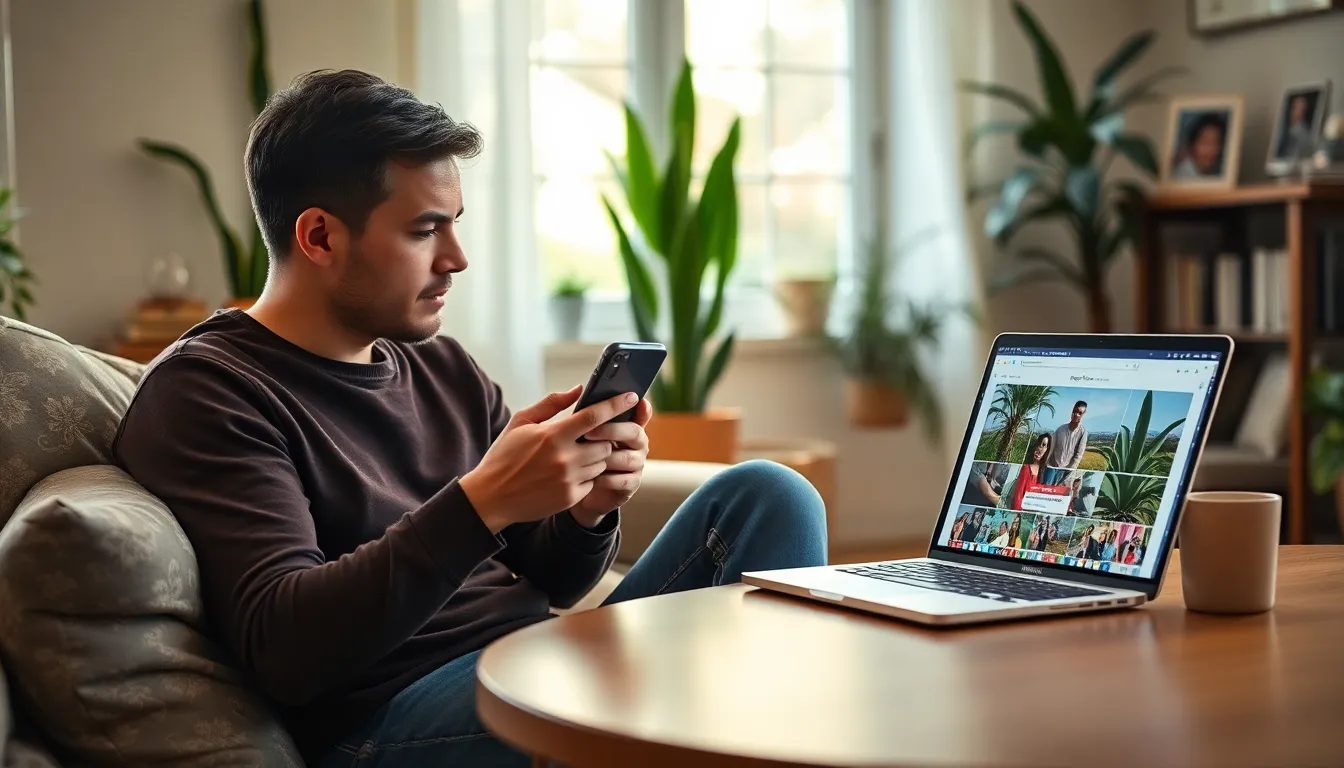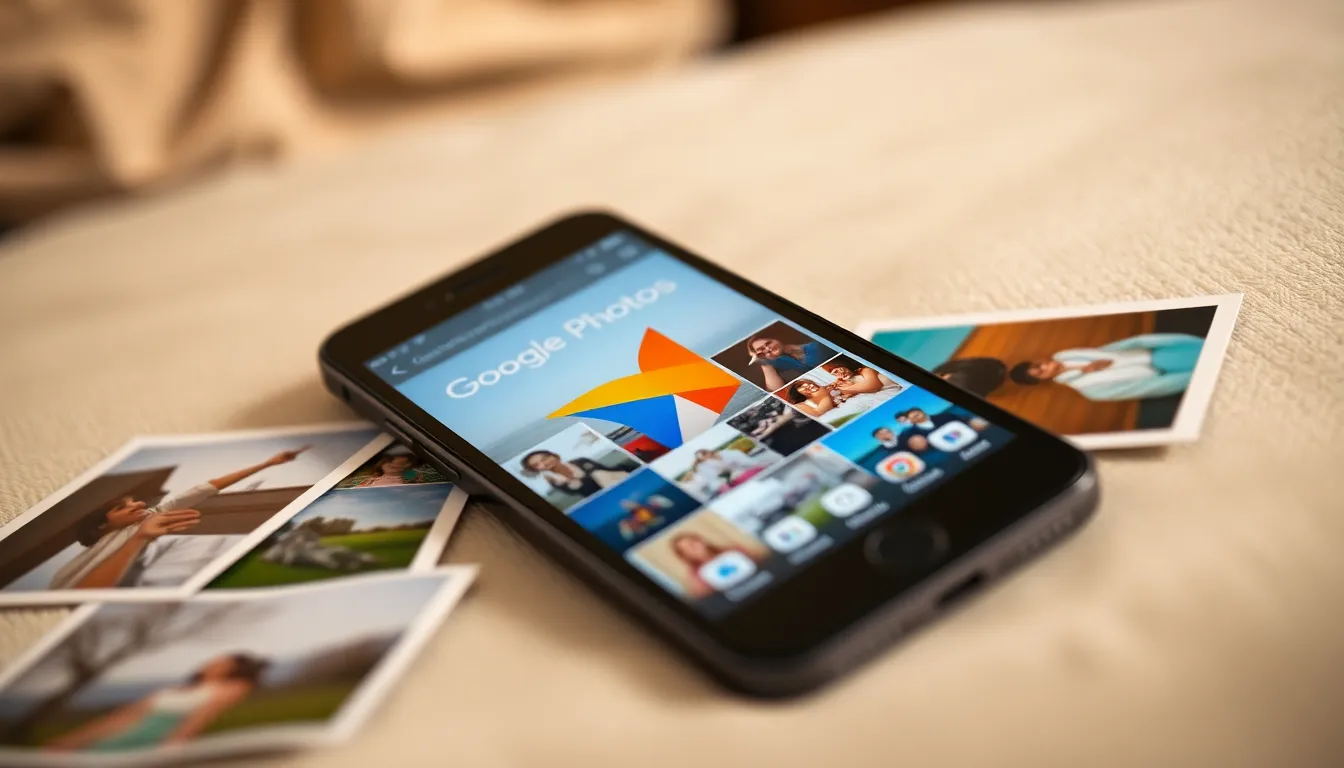In a world where selfies reign supreme and every meal is a photo op, the question looms: if you delete a photo from your iPhone, does it vanish from Google Photos too? It’s like asking if your favorite dessert disappears when you close the fridge door—spoiler alert: it doesn’t!
Table of Contents
ToggleUnderstanding Google Photos
Google Photos is a cloud-based service designed for storing and sharing photos and videos. It enables users to back up their media and access it from multiple devices.
What Is Google Photos?
Google Photos offers free and paid storage options for photos and videos. With this platform, users enjoy features like automatic backup, organizational tools, and easy sharing options. It supports various file formats, including JPEG, PNG, and MP4. Users can access their content via mobile apps and desktop browsers, providing flexibility and convenience.
How Does Google Photos Work?
Google Photos operates by syncing media to the cloud when connected to Wi-Fi or cellular data. Users upload photos by enabling backup settings in the app. This service uses facial recognition and machine learning to categorize images, making it easier to search and find specific photos. Users can collaborate with friends and family by creating shared albums, enhancing social interaction. When you delete a photo from Google Photos, it moves to the trash and stays there for 30 days before permanent deletion.
The Relationship Between iPhone and Google Photos

Deleting a photo from an iPhone doesn’t affect its presence in Google Photos. Thus, iPhone users can manage their device storage without impacting their cloud backups.
Syncing Photos: How It Works
Google Photos automatically syncs photos from devices that have the app installed and enabled. Users sign in with their Google account, allowing seamless integration across different platforms, including iPhones. Upon activation, the app backs up photos and videos in real-time, ensuring media is accessible from various devices. Users also can choose specific albums for automatic backup, tailoring their storage needs. With options for backup quality, they can select between high quality and original quality depending on their storage preferences.
Deleting Photos: What Happens?
When photos get deleted from an iPhone, they remain in Google Photos unless manually removed. Deleted images go to the Google Photos trash, where they stay for 30 days before permanent deletion. Users have the option to restore accidentally deleted photos during this period. Understanding this process helps users manage their media more effectively, ensuring important memories don’t get lost unintentionally. Photos stored in Google Photos maintain their accessibility, providing peace of mind for users managing storage on their iPhones.
Will Deleting Photos From iPhone Delete From Google Photos?
Deleting photos from an iPhone doesn’t remove them from Google Photos. Understanding the relationship between the two helps users manage their digital memories effectively.
Scenarios to Consider
When a user deletes a photo from their iPhone, that image remains accessible in Google Photos. Deleting is local, not affecting the cloud storage unless done within the Google Photos app. Users finding their device storage full can easily remove photos without worry. Backing up images to the cloud first ensures those memories remain secure. Users often prefer this method for freeing space on their devices. Opting for high-quality backups can alleviate concerns about losing images accidentally.
User Experiences and Feedback
Many users appreciate the separation between their iPhone and Google Photos. They express relief knowing deleted photos from the device remain in the cloud. Feedback highlights the ease of restoring images from Google Photos trash within 30 days. Others find comfort in the automatic backup feature, which provides reassurance that memories are safe. Users report satisfaction with the organization tools available in the app, allowing for efficient management of their collections. Overall, this ability to delete photos locally without cloud impact enhances user experience significantly.
Managing Your Photos Effectively
Managing photos across devices enhances organization and accessibility. Users can adopt strategies to keep their collections streamlined.
Tips for Photo Organization
Creating albums helps categorize images based on events or themes. Regularly deleting unwanted or duplicate photos maintains a clutter-free library. Using tags or labels allows for easier searchability when looking for specific images. Sorting by date ensures quick access to recent memories. Having a designated space for important photos simplifies locating treasured moments. Establishing a routine for organization prevents overwhelming buildup.
Backing Up Your Photos
Utilizing cloud services like Google Photos guarantees secure storage. Syncing photos automatically provides real-time backups, ensuring accessibility from various devices. Users can choose between high quality and original quality based on their storage needs. Scheduled backups help maintain photo collections without manual intervention. Regularly reviewing backup settings ensures optimal performance. Restoring deleted photos within 30 days from Google Photos enhances peace of mind for users.
Deleting photos from an iPhone doesn’t affect their availability in Google Photos. This separation allows users to manage their device storage without losing access to cherished memories stored in the cloud. With Google Photos’ automatic backup features and easy restoration options, users can confidently delete images from their devices, knowing they remain safe online.
This flexibility enhances the user experience by providing peace of mind regarding photo management. By utilizing organizational strategies and regularly reviewing backup settings, users can ensure their digital memories are well-preserved and easily accessible whenever needed.




